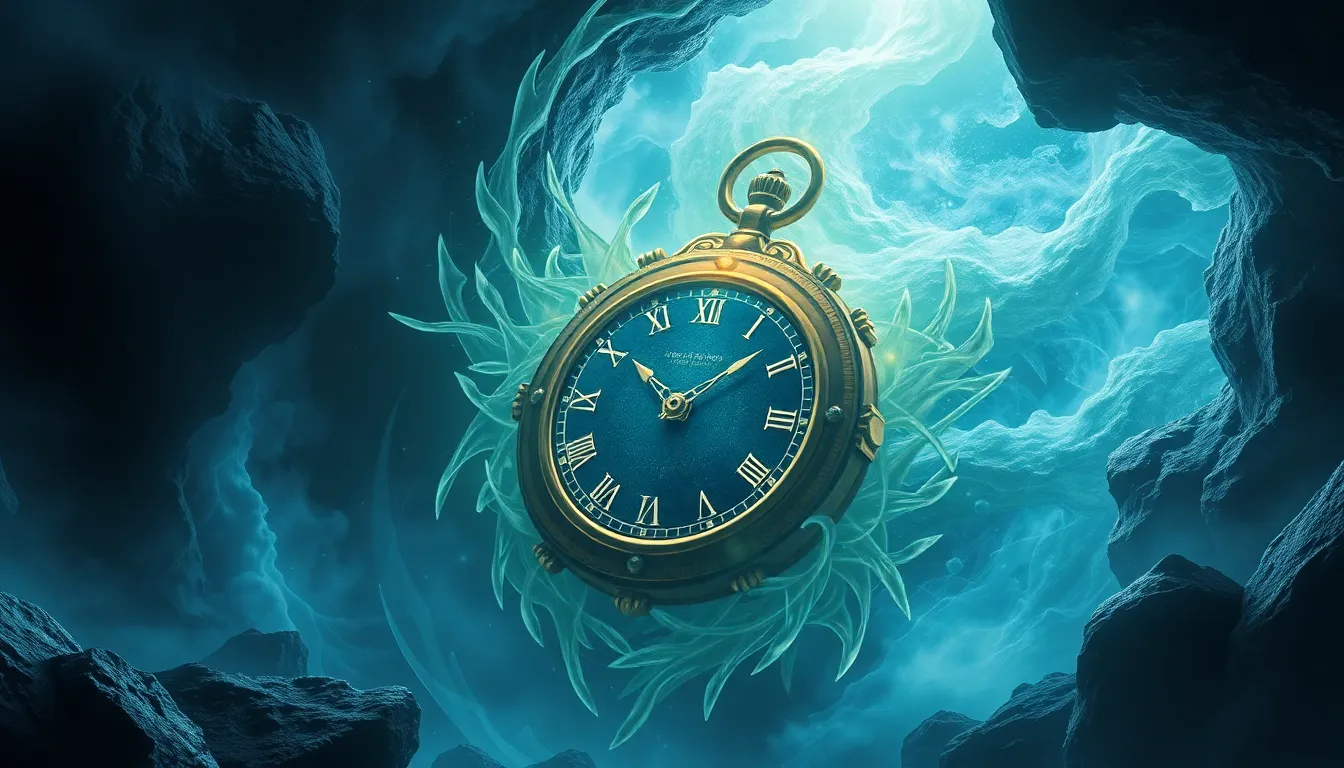The Amulet of Time: Myths of Past and Future
I. Introduction
Time is a complex and multifaceted concept that has been interpreted in various ways across different cultures. It is often viewed as a linear progression from past to future, but many cultures depict it as cyclical, with events repeating in a perpetual loop. This divergence in understanding has led to rich mythologies surrounding the concept of time.
Amulets have long been significant in mythology, serving as symbols of protection, power, and transcendence. They are often believed to possess magical properties that can influence reality. The Amulet of Time emerges as a fascinating symbol, representing humanity’s desire to control or understand the passage of time, leading us to explore its myths, origins, and implications.
II. The Historical Context of Timekeeping
Throughout history, civilizations have developed various methods to track time, reflecting their cultural values and scientific advancements.
- Ancient Civilizations: The Egyptians used sundials, while the Mayans developed intricate calendars based on celestial events.
- Evolution of Timekeeping Devices: The transition from sundials to mechanical clocks marked significant advancements in timekeeping. The invention of the pendulum clock in the 17th century revolutionized accuracy.
- Cultural Interpretations: Different cultures perceive time either as a linear sequence of events or a cyclical process, influencing their rituals and societal structures.
III. The Mythical Origins of the Amulet of Time
Various cultures have created myths surrounding timekeeping and the manipulation of time, often featuring powerful artifacts like the Amulet of Time.
- Legends: In Greek mythology, the god Chronos personifies time, while in Hinduism, the concept of Kali represents the cyclical nature of time.
- Symbolism: Time is often personified through gods and goddesses, symbolizing the control over fate and destiny.
- Key Myths: Stories of time travel, such as those found in Hindu texts where sages can transcend time, enhance our understanding of these myths.
IV. The Amulet of Time in Literature and Folklore
Literature has long explored themes related to time, with various artifacts, including the Amulet of Time, featuring prominently in narratives.
- Classic Literature: Works like H.G. Wells’ “The Time Machine” delve into the possibilities of time travel, where artifacts become crucial to the narrative.
- Contemporary Storytelling: Modern narratives often deploy time-related artifacts to explore themes of regret, destiny, and change.
- Folklore’s Influence: Folklore shapes our understanding of time, embedding cultural beliefs about its cyclical or linear nature in storytelling.
V. The Science of Time: Bridging Myth and Reality
The scientific study of time offers a different perspective, challenging and complementing the myths that have persisted through the ages.
- Scientific Understanding: Time is understood through physics, where it is often treated as a dimension similar to space.
- Theories of Relativity: Einstein’s theories revolutionized our understanding of time, suggesting that it is not absolute but relative, influenced by speed and gravity.
- Myth and Science: The intersection of these realms raises fascinating questions about the nature of reality and the possibilities of time manipulation.
VI. Cultural Variations of the Amulet of Time
The Amulet of Time takes on various forms across cultures, reflecting unique interpretations of time and its significance.
- Comparative Representations: In some cultures, time amulets are adorned with symbols of clocks or celestial bodies, while others feature deities associated with time.
- Eastern vs. Western Mythologies: Eastern cultures often see time as cyclical, leading to different portrayals of time amulets compared to the more linear perspectives in Western traditions.
- Rituals and Ceremonies: Amulets play significant roles in various rituals, often invoked to seek blessings related to time, such as longevity or favorable outcomes.
VII. The Psychological and Philosophical Implications of Time
Myths about time profoundly influence human behavior and perception, raising philosophical debates that resonate through centuries.
- Influence on Behavior: Cultural myths shape how individuals perceive time, leading to different attitudes toward life events and personal development.
- Philosophical Debates: The concepts of free will and destiny have been hotly debated, with time often seen as a determinant of one’s path in life.
- Mental Health: The perception of time can significantly affect mental health, with individuals struggling with the past or anxiety about the future.
VIII. The Amulet of Time in Modern Popular Culture
In contemporary society, the Amulet of Time continues to captivate audiences through various media forms.
- Depictions in Media: Movies like “Back to the Future” and series such as “Doctor Who” prominently feature time travel artifacts, including the Amulet of Time.
- Influence on Society: These representations shape societal views on time, often romanticizing the notion of rewriting past mistakes or glimpsing the future.
- Resurgence of Interest: The popularity of time travel narratives has surged, reflecting a collective fascination with the concept of time and its manipulation.
IX. Lessons from the Myths of the Amulet of Time
The myths surrounding the Amulet of Time teach us valuable lessons about our relationship with time. They remind us of the importance of living in the present, acknowledging the past, and contemplating the future. As we navigate our lives, these stories encourage us to reflect on how we perceive and interact with time, urging us to wield our own metaphorical amulets wisely, as we craft our destinies in an ever-unfolding tapestry of time.


